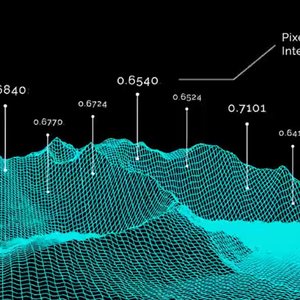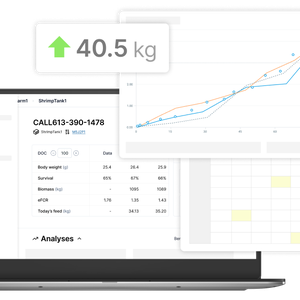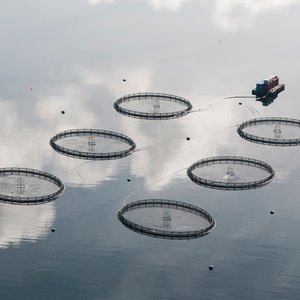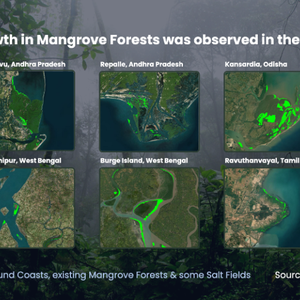Study Affirms Seafood to be a Healthy Choice
Americans can decrease their risk for heart disease by substituting seafood for other animal proteins, according to the Institute of Medicine of the National Academies. A government-sponsored study, released by the Institute, finds that seafood is rich in nutrients, low in saturated fats, and should be incorporated more into the American diet to reduce the risk of early death by heart disease – the primary cause of death in this country. These findings affirm dietary guidelines established by the U.S. Department of Agriculture.
The National Oceanic and Atmospheric Administration, with support from the Food and Drug Administration, sponsored this independent study titled, “Seafood Choices: Balancing Benefits and Risks.” Both agencies seek to simplify the message for consumers and help the public understand how to maximize important health benefits of eating seafood while minimizing exposure to environmental contaminants found in nearly every food source, including fish.
“NOAA is proud to help bring this potentially life-saving information to the public’s attention, especially in light of the alarming rates of death by heart disease among Americans,” said Bill Hogarth, director of NOAA Fisheries Service. “With fish populations rebuilding to sustainable levels and under tight harvest controls in U.S. waters, Americans should enjoy seafood as part of a healthy diet.”
In spite of some concern about environmental contaminants, the study concludes that, on balance, “seafood is a nutrient-rich food that makes a positive contribution to a healthful diet.” The findings advise all Americans to eat seafood regularly. Those who eat more than two servings per week should incorporate a variety of species into their diet to benefit from the variety of nutrients in different species and to avoid accumulated exposure to environmental contaminants.
The study affirms federal guidance tailored for women who are pregnant, nursing or may become pregnant, and children under age 12. These segments of the population safely can consume 12 ounces of fish per week, including six ounces of white canned tuna, but should avoid large predatory fish such as shark, swordfish, tilefish and king mackerel. The study highlights scientific evidence that seafood benefits fetal brain development, and encourages pregnant women to incorporate a variety of seafood into their diet.
As the study points out, seafood is safer today than in previous decades. Authors of the report emphasize that many environmental pollutants have been declining, including persistent organic compounds such as PCBs, pesticides and other chemicals. Consistent with the Institute’s recommendation, the federal government continues to improve monitoring controls for both domestic and imported seafood to address safety concerns, and NOAA continues to develop better methods for detecting environmental conditions that could potentially affect seafood safety. NOAA works with a number of government and state agencies and private organizations to increase seafood safety research, monitoring, early detection, identification, and warning.
NOAA is involved with additional studies currently underway to fill some of the data gaps identified by the Institute related to omega-3 fatty acids, selenium, and other nutrients found in seafood as well as contaminants such as methyl mercury and PCBs.
The Institute recommends that NOAA establish an interagency working group to improve consumer information and put health benefits of consuming seafood into perspective for the public. NOAA is taking the lead to work with other appropriate federal agencies to develop and test consumer messages and develop new Web-based tools that will allow consumers to generate tailored seafood consumption guidance based on their personal demographics.
An additional study in the Journal of the American Medical Association concludes that the benefits of eating seafood far outweigh perceived risks. Researchers with the Harvard School of Public Health conducted the study, “Fish Intake, Contaminants, and Human Health: Evaluating the Risks and the Benefits.” The paper points out that even modest consumption of fish reduces risk of coronary death by 36 percent and total mortality by 17 percent. Consistent with the Institute study, the Harvard authors recommend consumers vary the species of fish in their diets and limit intake of large predatory species, which are highest in mercury content (see below).
The Harvard study concludes that avoidance of seafood consumption due to perceived health risks could result in thousands of needless deaths per year due to coronary heart disease and suboptimal neurodevelopment in children.
NOAA Fisheries Service is dedicated to protecting and preserving our nation’s living marine resources and their habitat through scientific research, management and enforcement. NOAA Fisheries Service provides effective stewardship of these resources for the benefit of the nation, supporting coastal communities that depend upon them, and helping to provide safe and healthy seafood to consumers and recreational opportunities for the American public.
In 2007 the National Oceanic and Atmospheric Administration, an agency of the U.S. Commerce Department, celebrates 200 years of science and service to the nation. From the establishment of the Survey of the Coast in 1807 by Thomas Jefferson to the formation of the Weather Bureau and the Bureau of Commercial Fisheries in the 1870s, much of America's scientific heritage is rooted in NOAA.
NOAA is dedicated to enhancing economic security and national safety through the prediction and research of weather and climate-related events and information service delivery for transportation, and by providing environmental stewardship of our nation's coastal and marine resources. Through the emerging Global Earth Observation System of Systems (GEOSS), NOAA is working with its federal partners, more than 60 countries and the European Commission to develop a global monitoring network that is as integrated as the planet it observes, predicts and protects.
On the Web:
NOAA Fisheries: http://www.nmfs.noaa.gov
NOAA’s Seafood & Health page: http://www.nmfs.noaa.gov/seafood.htm
Benefits of fish intake exceed the potential risks says JAMA
A report in the Journal of the American Medical Association concludes that the health benefits of eating fish greatly outweigh the potential risks—especially when guidelines are used to reduce the small chance of being affected by these risks.
In a review in JAMA, The Journal of the American Medical Association Vol. 296 No. 15, October 18, 2006, (Fish Intake, Contaminants, and Human Health: Evaluating the Risks and the Benefits), Mozaffarian and Rimm evaluate intake of fish or fish oil and risk of cardiovascular events and mortality, effects of methylmercury and fish oil on early neurodevelopment, risks of methylmercury for cardiovascular and neurologic outcomes in adults, and health risks of dioxins and PCBs in fish.
They conclude that "for major health outcomes among adults, based on both the strength of the evidence and the potential magnitudes of effect, the benefits of fish intake exceed the potential risks. For women of childbearing age, benefits of modest fish intake, excepting a few selected species, also outweigh risks". Read the article










